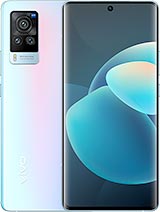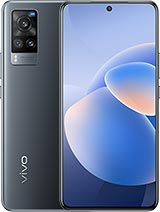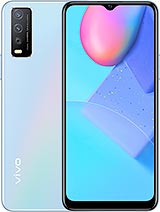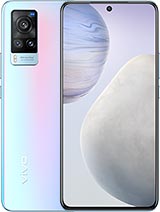vivo X50 Pro Unboxing - World's first Rotating Camera. By Mrwhosetheboss
Okay, so generally in the smartphone market, there are two types of companies: those who wait for others to do things before putting it into their own phones and those that always try to be first, and I think it's fair to say that VIVO firmly falls into the latter category. They were the first with a completely full screen phone, the first to use an in-display fingerprint scanner, the first to bring a motorized pop-up camera, and here they are yet again claiming to have the next big thing for smartphones. This is the VIVO x50 pro a smartphone with a camera. That's different! We'll put it that way. It's presented well, and it comes with a pair of earphones with some silicone tips. There's a 33 watt, fast charging, brick clear case and manuals, and right at the bottom, an USB charging cable.
Now for the fun bit. You know if someone asked me to draw out what I thought. A typical 2020 flagship, smartphone looks like from the front. I would probably end up with something like this: it's got: a 6.56 inch, 1080p AMOLED display a fluid 90hz refresh rate curved display, edges and a little hole punch camera in the corner. Mind you this ben't a complaint because, unlike most flagships, this phone sits closer to 600 and the display is good, it's bright and actually has a smaller bezel than even the OnePlus 8.
It's just we've seen this before, but what we haven't seen is what's going on the back of the phone, the camera setup looks almost alien like it's from another planet, because, as well as the five times optical zoom camera at the bottom, the two-time zoom camera for taking portraits and the eight megapixel ultrawide, which are all fairly normal-sized. The main camera is just enormous. You could live in there. They call this the gimbals camera and when I say the word gimbals, you probably immediately think of a smartphone stabilizer like this and that's sort of right. Viva have tried to basically boil down that mechanism to fit inside the body of a phone.
So how does it work? Well? The first thing to understand is that the whole objective of a stabilization system is to make sure that the camera itself is moving as little as possible and there are two existing ways that companies do this. The first is electronic image stabilization, which kind of cheats slightly when you use this when you're using as, your camera zooms in, and then it uses the extra room it now has around the edges to try and match every frame of the video with the frame before it. So as kind of creates the illusion that the camera is staying still, even if it's actually moving, but a lot of high-end phones actually take this a step further. They use something called is or optical image stabilization and essentially, instead of creating the illusion that the camera's still even when it's not with is the camera actually is still is means that the camera looks at the movements you make with your phone. Let's say I move left and the camera itself will physically move in the opposite direction so that it counteracts that movement it'll move right.
So that brings me on to this. What viva basically tried to do here is to create a system that takes is to the next level, so, first, it doesn't just shift around in a flat plane up and down left and right. The camera rotates like this and that's important, because a lot of the time when I'm shaking my camera around when I'm kind of moving around like this, I'm not just going directly up and down or left and right, I'm actually tilting my phone, maybe like this, but when I do that here when I move let's say from here to here, the camera has the ability to correct itself from here to here, and the second thing is that just the ability to move here is around three times that of any other normal is system. So, instead of just being able to stabilize this motion, it could, in theory, stabilize something like this, but this is a first gen product. How well does it actually do in practice? I'll say this better than I thought it would be.
The second you open the camera app and click on video. It becomes very clear that something's happening when you're. Just holding the phone, it looks a bit like it's frozen still in the air, all those micro movements you naturally make with your hands they're gone so seeing as the Huawei p40 pro has probably been my favorite camera phone this year and because the VIVO looks suspiciously like it's targeting that phone, this felt like a good place to start. So the first thing I tried was just twitching, both phones around and the VIVO just moves less, which is good, but I guess you probably expect that it's got an entire mechanism built to counter this movement. But, to be honest, when you start walking with it, I would say the VIVO only trades blows with the flagships.
Sometimes I feel like it does do a better job, but sometimes I actually feel like just the basic is in those phones is a little more natural. This could be because I'm using the phone on pre-release software, but we'll have to wait and see the first big advantage, though, comes. If you try to pick up the pace. If you run it'll be very clear that the VIVO has something that the others don't I'm just not usually convinced that people do this very often just run around while recording, but there is another perk to this gimbals system see because most phones are using primarily electronic image stabilization in video for that to work. The software has to basically look around and understand each frame to be able to match it with the one before that, but this requires light.
So you might have noticed this when you're moving in a situation of fairly low light, most phones will fall apart. They'll struggle to piece together the frames needed for stabilization, but because Vito's got this gimbals to fall back on. It doesn't need that as as much so in this particular case, it's actually way ahead. This was a very dark scene here, right now, it's up against the galaxy s20 ultra, it's low light, I'm walking fairly carelessly taking 4k video on each it's raining. This is a phone's worst nightmare, and yet it's kind of cool that I can pause.
This video at any point and chances are it'll, be clear on the VIVO and blurry on the Samsung and just to be absolutely sure it was working. I tried again versus the iPhone and sure enough. It's pretty much the exact same scenario and while I was out there, while I was doing all this testing, I noticed something else: that's pretty cool, so you know how, when you're taking a night mode photo on a phone, and you try really hard to hold it as still as possible. Well, because the phone practically holds itself still, it does a pretty good job of keeping the subject crisp. So at this point I decided to spend some time using it alongside the Huawei p40 pro at night, not because I thought it would win just because I thought it'd be interesting, but the results kind of surprised me.
It's been super cloudy over the last few weeks, so I haven't managed to test its ability to capture the moon or capture stars at night, because that is something that Huawei's amazing at, but as far as just standard handheld night mode photos. The results from this looked just as good, so, as you probably guessed, then it leaves phones like the standard galaxy s20 in the dust which, as you know, is still a 900 phone and something I've really grown to appreciate is the style modes. When taking night mode shots, you can pick between four different modes and each one produces its own fairly, distinct. Take on the same scene. I mean technically they're just filters, but I've not seen this before with night mode, and they do work really well.
The rest of the cameras here are pretty normal stuff, but decent the 8 megapixel ultrawide is serviceable. It's not as good as that of most flagships, but I'd say the zoom is actually better. You can get to 5 times even 10 times magnification, and you still have a pretty nice result. There's a couple of cool portrait modes. I've been playing around with I found the rainbow mode.
Strangely addictive. I was just sat inside on a dull afternoon, taking photos that you could argue, look quite convincingly sunny and there's something else called movie camera which locks onto a subject and keeps it in frame at all times. This here was shot while not actually moving the phone at all. It's just tracking the ball, but the quality of this mode takes a definite hit. Okay to bring this all together.
To answer the question that's been playing in the back of my head since I first opened this. Who is this phone for because on one hand this is the most stable camera on a smartphone most of the time, but would you have instead preferred it if they put that money towards having the best chip out there as opposed to the upper mid-range snapdragon 765g that we do get? Maybe this doesn't have an IP rating, it doesn't have wireless charging. Would you want those instead? Maybe, but what I can say is that the x50 pro is far better than I thought it would be. As a phone, I saw the commercials, I saw how it's being marketed as if it's one selling point is stable video, but in reality it's surprisingly well-rounded. I mean, for starters, the stabilization isn't just for video.
It helps in photos too, but even just generally, I feel like for six hundred dollars. The phone has a lot of going for it. The display is fantastic, and I think they've made a lot of good decisions when it comes to how it was built, especially with this p40 pro. Like finish on the back, I'm almost kind of impressed that they've managed to fit not only a 4 315 William hour battery, but also this entire gimbals system into a phone. That's eight millimeters thick, and its camera bump is quite a bit smaller than what we've seen from top tier phones this year.
But I guess what I'm really trying to get at is that I'm really glad this exists, whether it turns into a huge hit success. I don't know, but it feels like the start of a new trend. That's going to benefit all smartphones. Viva were the first to make an in-display fingerprint scanner, and I would say this tech is far more well baked than that was originally, but look where in display fingerprint scanners are now they're everywhere. So to sum up, viva x50 pro I'm happy about the technology going on here, I'm very happy about.
I should probably also mention that, like most phone companies now, they also do have a pair of true wireless earphones that work quite well alongside. If you enjoyed this video, a sub to the channel would be incredible. My name is Aaron. This is Mr who's, the boss, and I'll catch you in the next one. You.
Source : Mrwhosetheboss





























